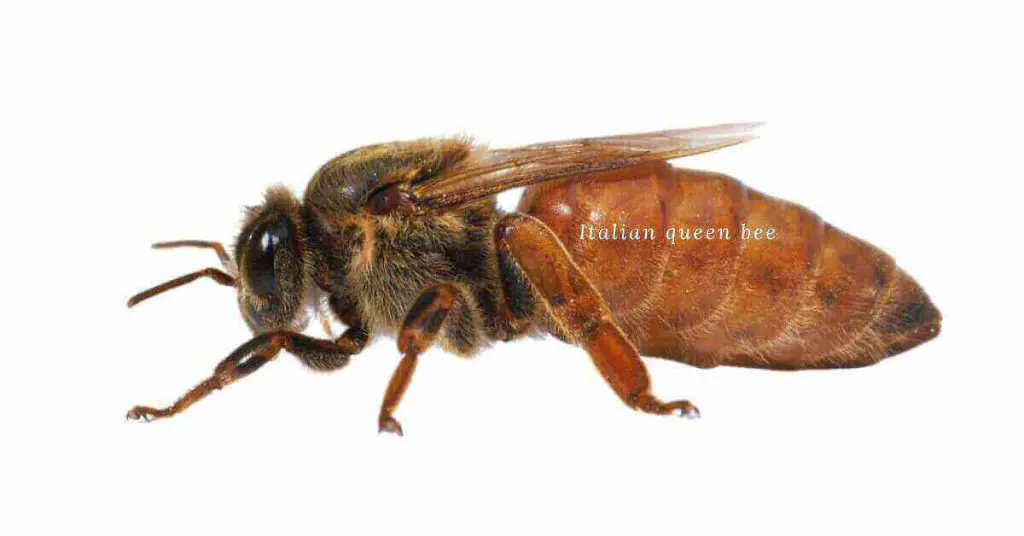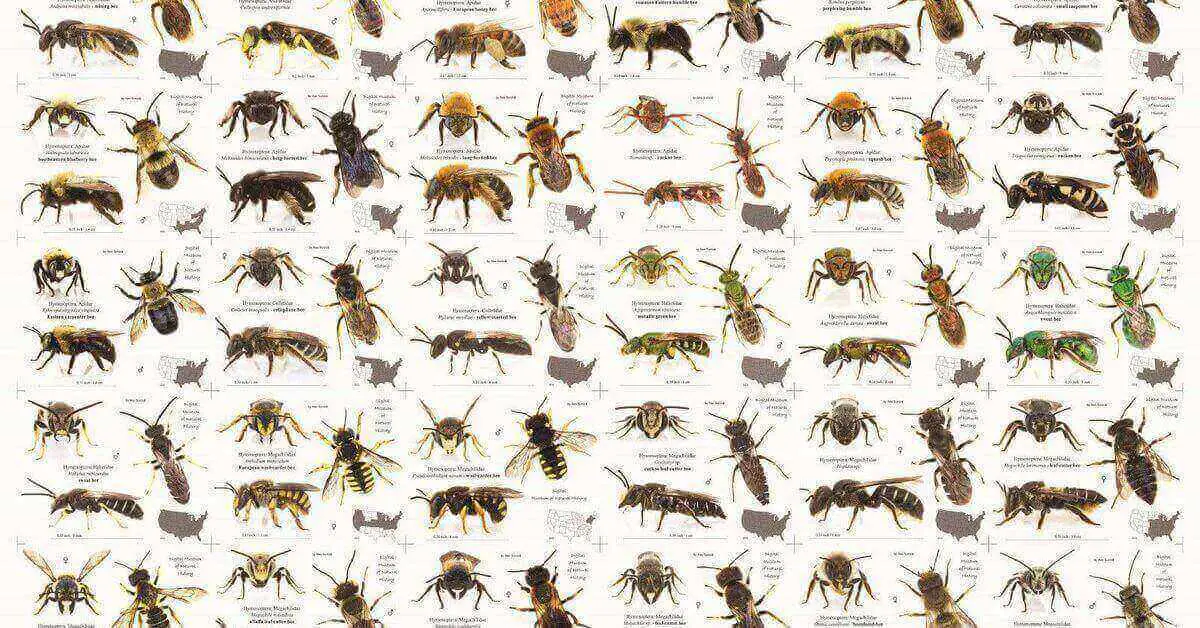The Italian queen bee is a subspecies of the European honey bee. Beekeepers consider the Italian queen bee as one of the most popular breeds of honey bees due to its docile nature, making it easier to manage and work with. This breed is known for its gentle temperament and high honey production.
Life cycle of Italian Queen Bee
Every bee species has a different lifecycle. The life cycle of the Itali queen bee begins when the queen lays eggs in the cells of the hive. After about three days, the eggs hatch into larvae, fed a diet of royal jelly by the worker bees. After about six days, the larvae spin cocoons and undergo metamorphosis, emerging as adult bees about 12 days later.
What do italian bees look like
Italian bees, known scientifically as Apis mellifera ligustica, display distinct characteristics that set them apart in the world of beekeeping. These bees exhibit a vibrant and distinctive appearance, making them easily recognizable. Their bodies are primarily golden-yellow, with bands of dark brown or black on their abdomens. The thorax and head of Italian bees also share this golden hue, creating a cohesive and visually appealing appearance.
Responsibilities
The Italian queen bee is larger than the worker bee and is responsible for laying eggs and reproducing. The queen bee is fed a diet of royal jelly throughout her life, which enables her to live for several years. The queen bee also has a special gland that secretes pheromones. Which help regulate the worker bees’ behavior and maintain order in the hive.
The Italian queen bee is a gentle and docile honey bee, making it a popular choice among beekeepers. Compared to other breeds of honey bee, these bees are less likely to sting and are not known to be overly aggressive.
They also have a high honey production rate, making them a valuable asset to any beekeeping operation. The queen bee is also known for its ability to adapt to various climates and conditions. Which making it a versatile breed for beekeeping.
Strength
In terms of strengths, it is renowned for its exceptional honey production, displaying a remarkable ability to generate substantial honey yields. Additionally, this breed of queen bee exhibits strong adaptability to various environmental conditions, enabling it to thrive in different climates and regions.
Weakness
One notable weakness lies in its susceptibility to certain diseases and pests, which can impact the overall health of the colony. Furthermore, its rapid expansion tendencies can sometimes lead to issues of overcrowding within the hive, potentially triggering swarming behavior.
It’s important for beekeepers to actively manage these weaknesses to ensure the health and vitality of the Italian queen bee colonies.
Honey making ability
Yes, Italian queen bees make honey like other honey bee subspecies. They have the same ability to collect nectar from flowers. The worker bees bring the nectar back to the hive, which they convert into honey. The Italian queen bee produces honey that is stored in the honeycomb cells, which the beekeeper can harvest.

The primary duty of the Italian queen bee is reproduction. The queen bee is responsible for laying eggs which will hatch into the new bees and keep the colony going. She is the only fertile bee in the colony and responsible for the continuation of the colony. The queen bee also releases pheromones which regulate the behavior of the worker bees in the hive, which helps maintain order and organization within the colony.
In addition to reproduction, the Italian queen bee also plays a vital role in the overall health and well-being of the colony. She ensures that the colony has a steady supply of new workers and helps maintain a balance between the number of workers and drones. The queen bee also helps to ensure that the colony has sufficient food stores to survive through the winter months.
Related Articles:
Sting Behaviour
People consider Italian queen bees to be generally docile in nature and less aggressive than other subspecies of honey bees. They are less likely to sting when compared to other honey bees, making them a popular choice among beekeepers. It is important to note that all bees, including Italian queen bees, will sting in certain situations, such as when they feel threatened or if their hive is disturbed. They will also sting if they perceive a threat to their colony, such as a predator or a person seen as a potential threat.
It is also worth noting that the sting of an Italian queen bee is no different than that of a worker bee. Queen bees can also stink, but they do not possess stingers. Queen bees can only sting once, as they die after being stung.
Pollination
- Italian queen bees are known for their efficient pollination. They pollinate crops and flowers.
- Their gentle nature and low tendency to sting make them ideal for pollinating crops sensitive to bee stings.
- Italian queen bees exhibit strong foraging abilities, enabling them to cover a larger area and pollinate more plants.
- Queen bees are suitable for beekeeping in various regions, including Las Vegas, due to their ability to adapt to different environments.
Conclusion
Like other bee species, the Italian queen bee is best at making honey and laying eggs. Queen bee size and habits make them different from other worker bees. Italian bees are known for their non-aggressive behavior and are recognized as excellent pollinators.




